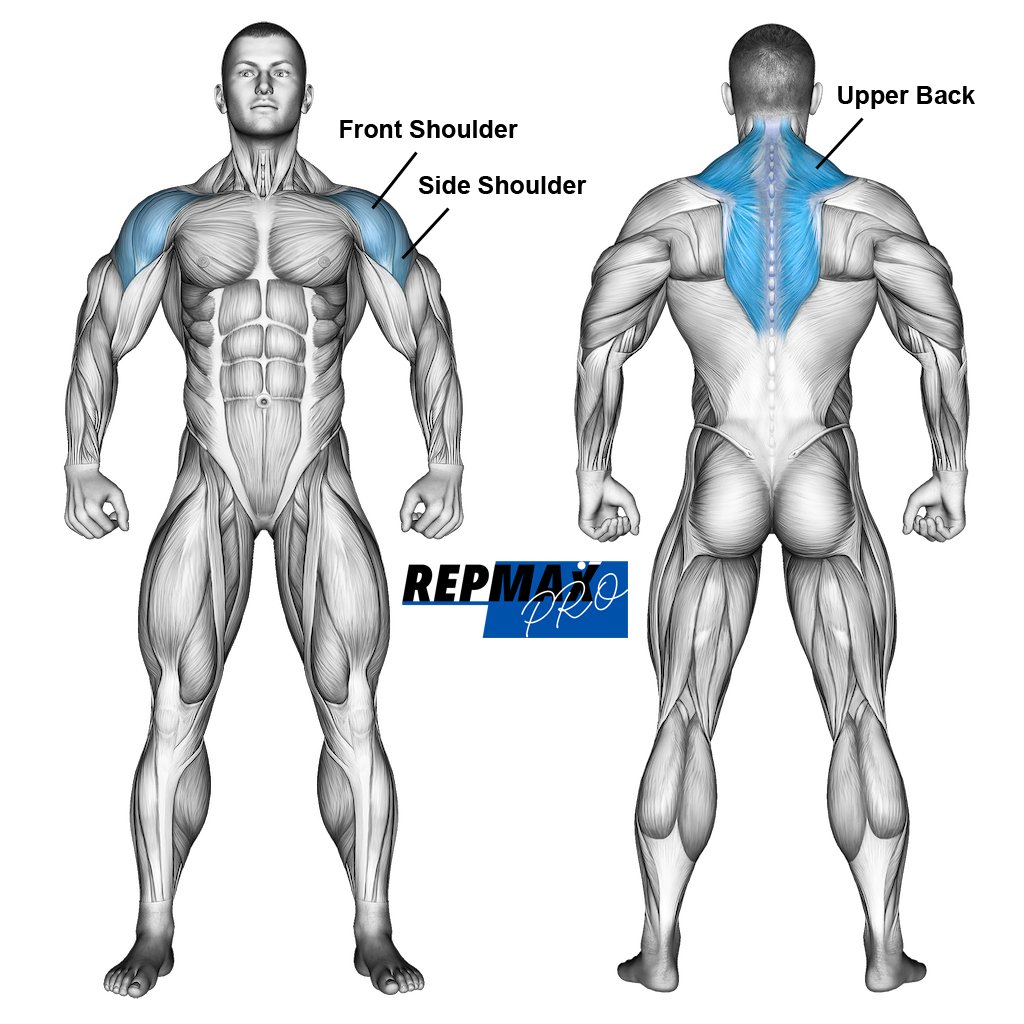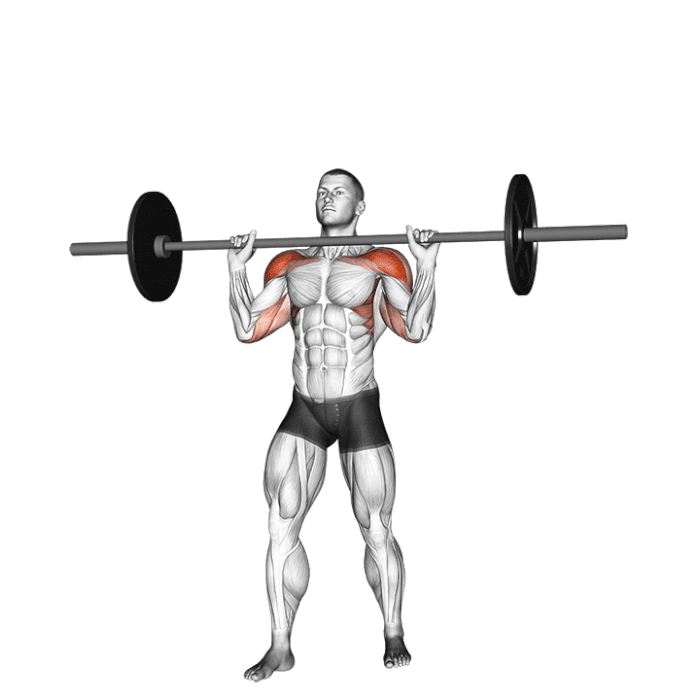Dumbbell One Arm Triceps Extension (on Bench)
The Dumbbell One Arm Triceps Extension is a highly effective isolation exercise that targets the triceps, helping to build and define the muscles on the back of the upper arm. Performing this exercise on a bench allows for greater stability and a more focused range of motion, making it an essential movement in any arm-focused workout routine.
The Dumbbell One Arm Triceps Extension (on bench) involves extending the elbow joint to engage the triceps muscles. This exercise is performed lying down on a bench, which provides a stable base and allows for a greater range of motion. The unilateral nature of the exercise helps in correcting muscle imbalances, ensuring both arms develop evenly in strength and size.
Targeted Muscle Groups

Primary Muscles:
- Triceps Brachii: The main muscle worked during the Dumbbell One Arm Triceps Extension is the triceps brachii. This muscle, located on the back of the upper arm, is responsible for elbow extension and is activated throughout the movement.
Secondary Muscles:
- Anconeus: This small muscle located near the elbow assists the triceps in extending the arm.
- Forearms: The muscles in the forearms work to stabilize the wrist and grip the dumbbell during the exercise.
Equipment Needed
To perform the Dumbbell One Arm Triceps Extension, you will need:
- Flat Bench: A stable bench to lie on, providing support and allowing for a full range of motion.
- Dumbbell: A suitable weight for your fitness level. Start light and increase your weight as your strength improves.
How to Perform the Dumbbell One-Arm Triceps Extension (on Bench) Step-by-Step Guide:
1. Setup:
- Begin by lying on a flat bench with your feet planted firmly on the ground. Hold a dumbbell in one hand with a neutral grip (palm facing inwards). Extend your arm straight up towards the ceiling. Your upper arm should be perpendicular to the bench, and your elbow should be slightly bent to keep tension on the triceps.

Muscles used in the military press.
Illustration credit © Aliaksandr Makatserchyk
2. Lowering Phase:
- Slowly bend your elbow to lower the dumbbell towards your head. Keep your upper arm stationary and allow only your forearm to move. Lower the dumbbell until it reaches just behind your head or until you feel a stretch in your triceps.
3. Lifting Phase:
- Press the dumbbell back up by extending your elbow. Focus on squeezing the triceps at the top of the movement to maximize contraction. Ensure the movement is controlled and avoid locking out your elbow at the top.
4. Repeat:
- Perform the desired number of repetitions on one arm before switching to the other. Maintain the same form and technique for both arms.
Recommended Reps and Sets
For muscle hypertrophy:
- Reps: 8-12 per set
- Sets: 3-4 sets
- Rest: 60-90 seconds between sets
For strength development:
- Reps: 5-8 per set with heavier weights
- Sets: 3-5 sets
- Rest: 2-3 minutes between sets
For muscular endurance:
- Reps: 12-20 per set with lighter weights
- Sets: 2-3 sets
- Rest: 30-60 seconds between sets
Pro Tips for Success
- Control the Movement: Focus on slow, controlled movements to maximize triceps engagement and minimize the risk of injury. Avoid using momentum to lift the weight.
- Keep the Elbow Stable: Ensure your elbow remains in a fixed position throughout the exercise. Allowing the elbow to drift can reduce triceps activation and put unnecessary stress on the shoulder joint.
- Start Light: Begin with a lighter weight to perfect your form. As you become more comfortable with the exercise, gradually increase the weight to continue challenging your muscles.
- Mind-Muscle Connection: Concentrate on the triceps throughout the movement. Visualize the muscle working as you perform each repetition, which can enhance muscle activation.
- Breathe Properly: Inhale as you lower the dumbbell and exhale as you push it back up. Proper breathing helps stabilize the core and maintain focus during the exercise.
Common Mistakes to Avoid
- Overarching the Lower Back: Keep your back flat against the bench throughout the exercise. Overarching can lead to lower back strain and reduce the effectiveness of the exercise.
- Using Too Much Weight: Avoid the temptation to lift heavier weights at the expense of form. Using too much weight can lead to poor technique and increase the risk of injury.
- Elbow Flaring: Keep your elbow pointed towards the ceiling and avoid flaring it out to the side. This helps to isolate the triceps and prevents shoulder strain.
- Inconsistent Tempo: Maintain a consistent tempo throughout each rep. Rushing through the exercise reduces time under tension, limiting the exercise’s effectiveness.
The Dumbbell One Arm Triceps Extension (on bench) is an excellent exercise for isolating and developing the triceps. By following proper form and incorporating this exercise into your routine, you can achieve stronger, more defined arms. Remember to focus on control, gradually increase the weight, and avoid common mistakes to get the most out of this movement. Whether you’re looking to build muscle or improve your arm strength, this exercise is a valuable addition to any upper-body workout routine.
